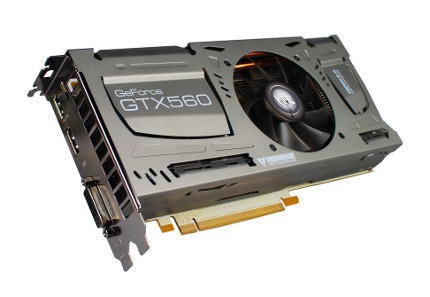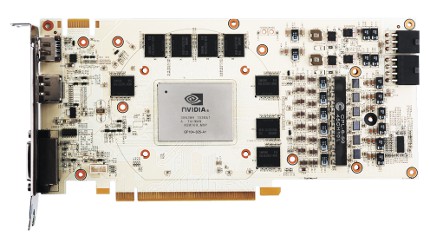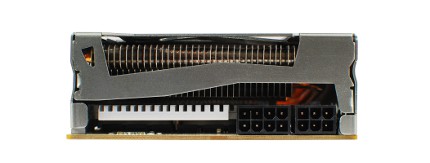White, but definitely not vanilla
After a few weeks of rumours, NVIDIA's GeForce GTX 560 TI is with us at last, and that means that the partners are out in force with their own takes on the new GPU. And as expected - and in stark contrast to AMD's recent launches - we're already seeing custom cooled and factory overclocked models hitting the market.
KFA2 is out in fine form with a pair of custom cards, although the star of the show is the GTX 560 TI LTD OC. Built onto a unique - and fairly striking - white PCB and strapped to single aluminium fan on top of a four heat-pipe cooler, this card is clearly a little bit different.

But KFA2 has put a lot more thought into this card beyond just the looks - the entire board has been designed from the ground-up to squeeze the most performance and stability out of the GF114 GPU while using the least amount of power.
Firstly the power-design is a completely custom affair. To make sure the chip never runs out of juice, one of the six-pin PCIe connectors has been upgraded to an eight-pin. The upshot of this is that the digital PWM circuitry can dedicate two of the phases to the memory, which should mean that the 1GB GDDR5 never gets starved of power. Talking of the memory, the frame buffer has been upgraded to super speedy 0.4ns GDDR5.

There's also a voltage measurement point, a ton of MLCC caps and Sanyo POP-CAPs all over the board. To cut a long story short, almost everything has been upgraded compared to the reference design, and then a few enthusiast-level extras have been thrown in for good measure.
Obviously all of this would be for nought if the frequencies didn't get a bit of a boost as well. The core clock has been increased from 822MHz up to 950MHz, meaning that the 384 shaders run at 1,900MHz. The memory has also been sped up from the stock frequency of 4,000MHz up to an effective 4,400MHz.










